Jump to Category: Curriculum | Discipline Design | Program | Professional Development
Curriculum | Discipline Design
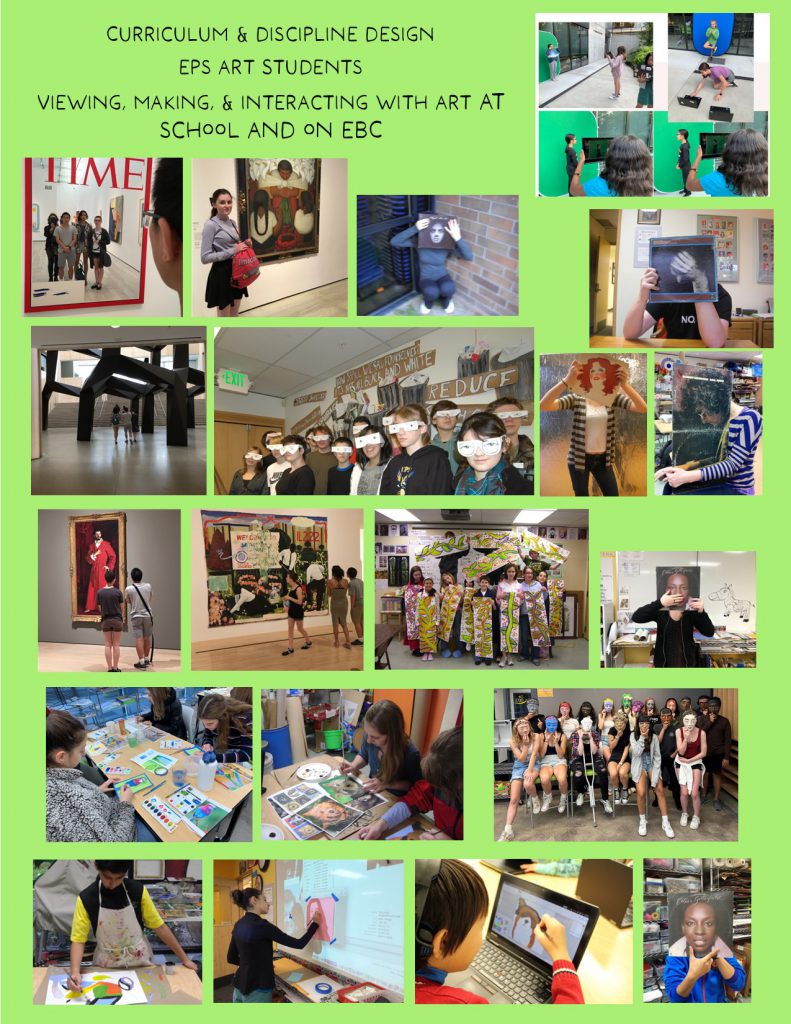
Designs and implements courses that reflect teacher mastery of their academic discipline and its teaching methodologies.
- Over the years, in the fine and performing arts department, we have worked collaboratively to define our discipline and to advance our courses within the limitations that EPS has, such as not enough enrollment to fill all of our classes.
- I have had the privilege from day 1 to create and design all of my classes from the title to the content.
- This privilege of designing all of my classes and teaching them over the years has enabled me to have consistency.
- The repeating of classes over the years has enabled me to see the art process take shape in all of the different students who have taken my classes. Many have taken classes with me in each of their years at EPS from grades 5-12.
- How students hear my words, see my demos, and implement them into their artwork is endlessly fascinating. It is a complete growth cycle for me and a regenerative process that is self-sustaining. In each of my classes, I have thought about the age group and the art techniques that I want my students to be able to do by the end of each class period and with each project.
- For all levels in each of my traditional art drawing and painting classes, I incorporate the basic art skills of how to hold a pencil or paintbrush, what type of pencil or brush, and techniques that can be done with these tools such as how to make washes, solid colors, drybrush, line shape, texture, value etc.
- For my 5-6 digital Art Meets Tech I teach basic computer skills such as folder organization and file naming, and different types of file extensions, and how to use the different software programs: Word, PowerPoint, Publisher, UNREEz, Photoshop, Premiere Pro, Paint.net. We talk about copyright free images and why we want to use them, and we talk about safe downloading methods of software.
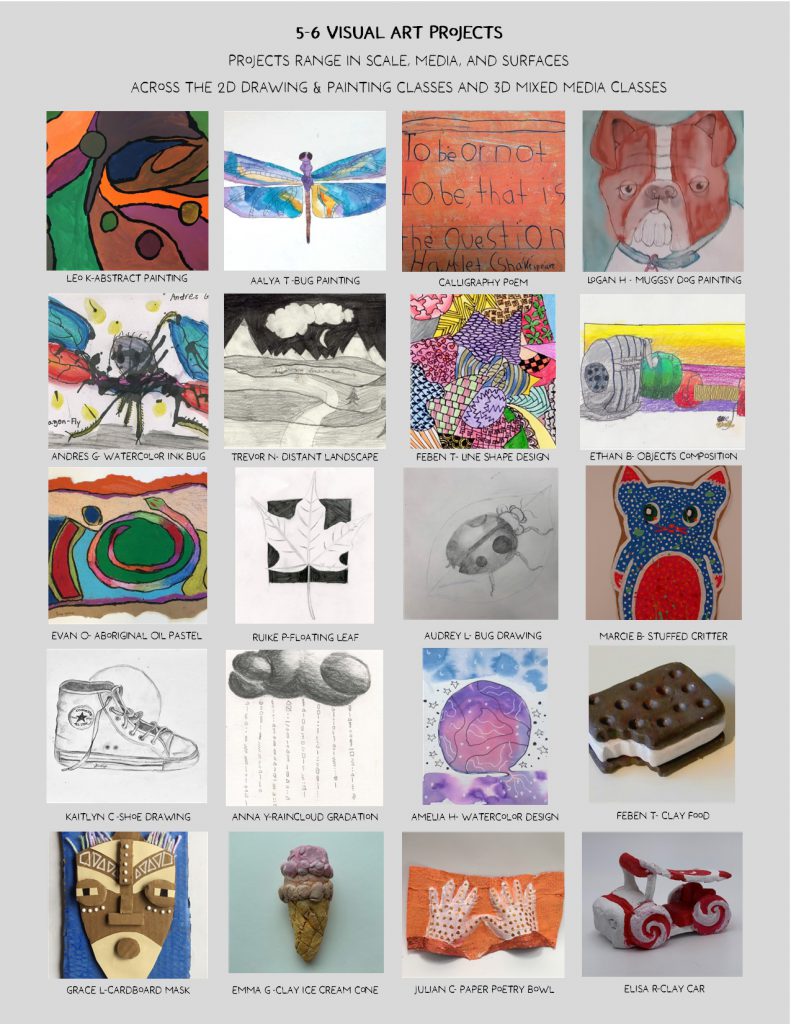
- For my 7-8 Digital Storytelling class, we cover the Grammar of the Shot, which is a PDF book that is all about composition and what shows in each frame. That each frame needs to be interesting to look at, and the 12 types of shots we practice out of the many different types of shots, are a common language of film and essential to creating interesting and varied shots to drive the visual story in a visually appealing way.
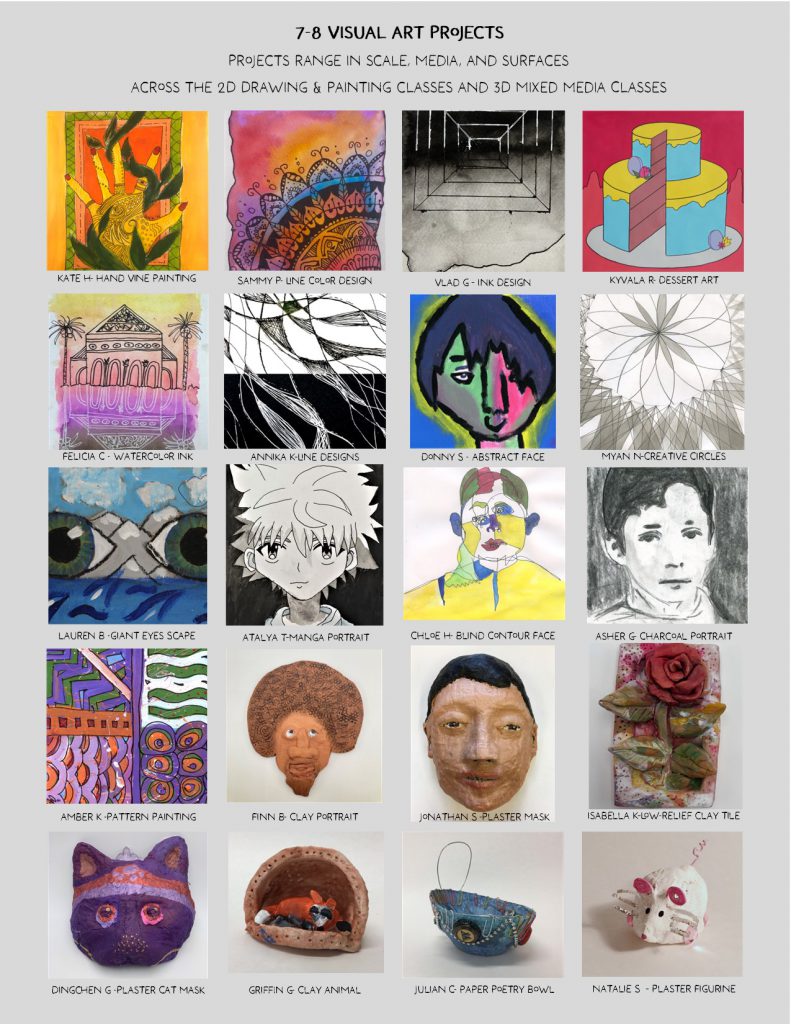
Designs and implements courses frames by the schools pedagogical tenets – inquiry, experience and integration.
- I do we do you do—experiential.
- My methodology is introducing a project, the support materials such as art examples, the tools and how to use them, the materials and what their characteristics are and different ways to apply them. I show how the artwork techniques are used in the world around us. The process I apply fulfills the sense of inquiry, the experience gained in the doing of the projects, and the integration in how they can apply their growing arts skills in other art projects for other disciplines.
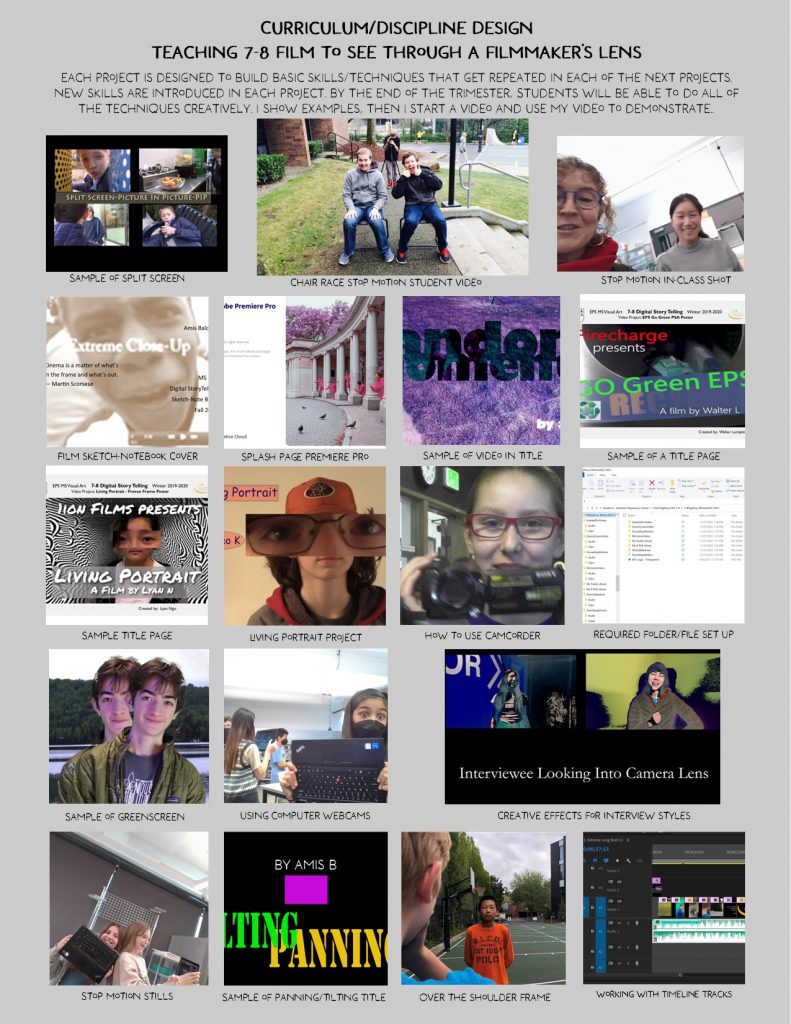
Collaboratively designs and evolves course curricula that are reflective of their academic disciplines’ philosophy and derivative of the school’s overarching philosophy.
- I have attempted to bring diversity to the artists I show, and the cultures and art I show. I directly talk about ethics in what we say and show, kindness in how we speak of others in the art room, and safety in the materials we use and how we use them.
- I cover the elements of Design and the Design and Principles which are the language of visual art. All artists use them. Any artist would be able to translate EPS art students’ processes, the tools and materials, and the techniques used.
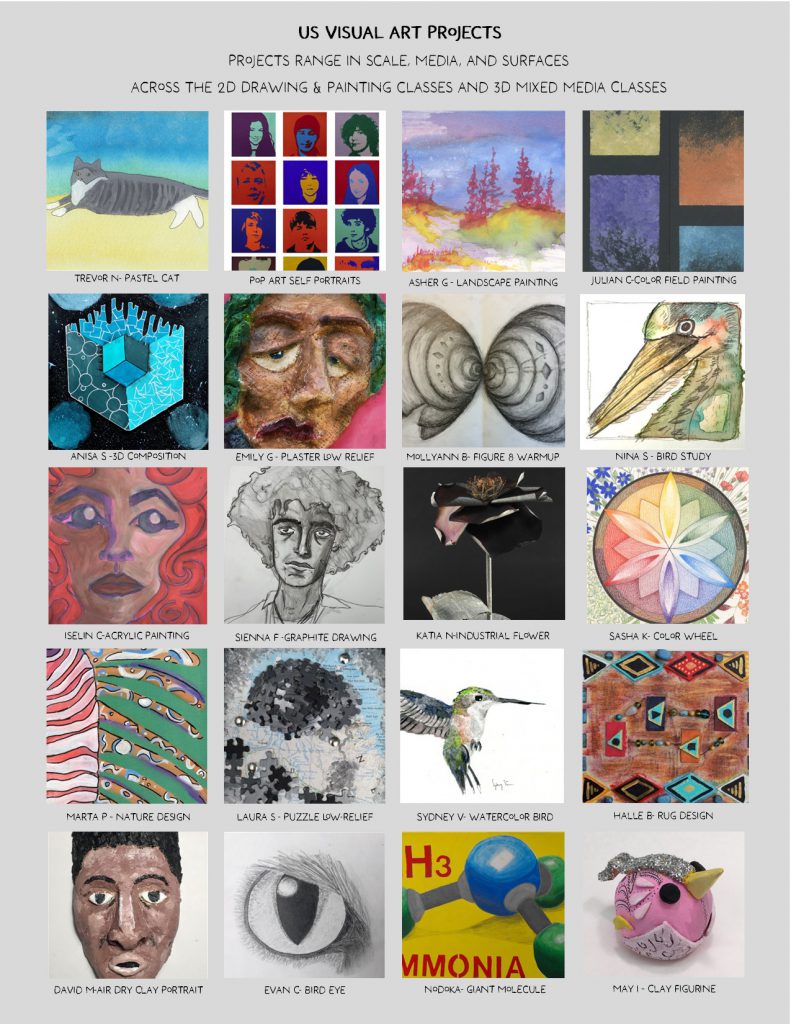
Updates course content to reflect the contemporary world.
- I have evolved from day one in everything from tech to new art materials, software programs, and techniques in both the traditional and digital art worlds. I am still evolving.
- In the digital realm, I have taken most of the EPS workshops offered, attended meetings, watched tutorials, and met one-on-one with Jonathan Briggs and others who were experts in the areas I was learning.
- I have learned alongside colleagues how to use the programs EPS has incorporated, such as Easy Grade Pro, four11, and Canvas.
- I continually watch YouTube tutorials to review and learn new techniques in Adobe software, specifically Photoshop, Premiere Pro, and InDesign.
- I joined Skill Share, and other organizations to watch other artists teach.
- I stepped up to teach a graphic design class in the winter of 2022. I created the graphic design class, but it had evolved through three other teachers, and the software evolved, so I had to relearn InDesign and learn basic Illustrator skills to teach that class.
- I participated in all of the training and development around remote teaching during the pandemic and worked with my colleagues Brian and Melissa and various tech people to help troubleshoot and enrich what we could do in this new realm. Much of what I learned in teaching remotely has carried over into the classroom. For example, being clearer and having a more consistent order in which I present information so students have a sense of how the art room works.
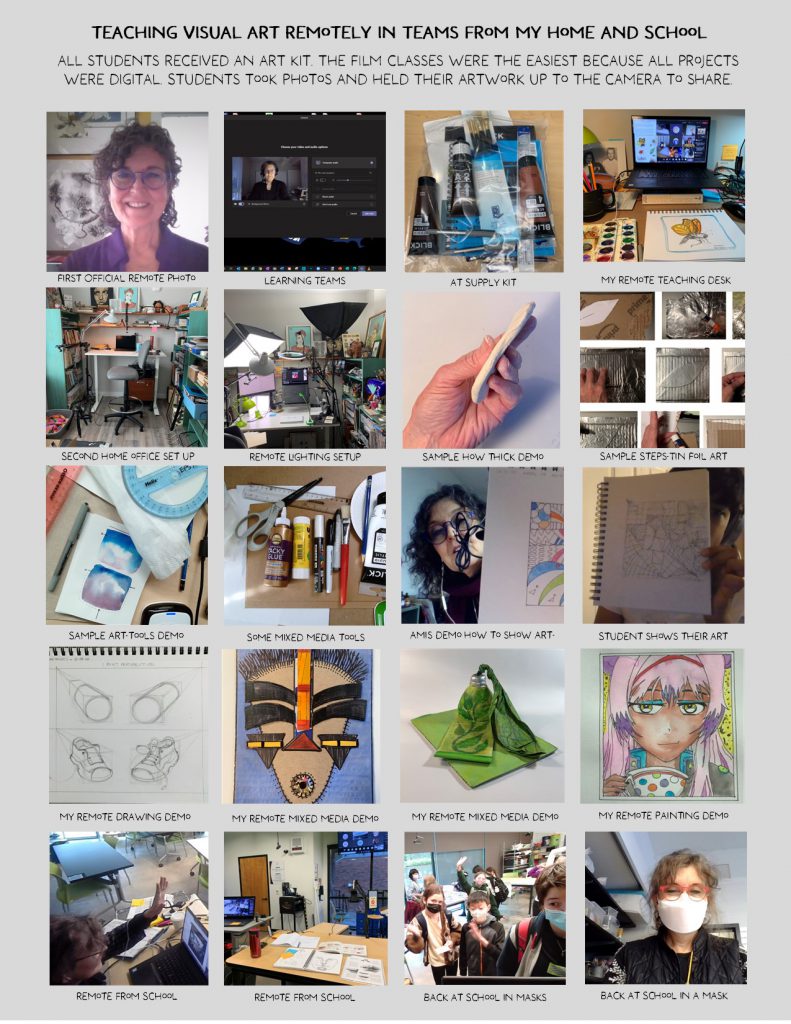
Program | Professional Development
PARTICIPATES ACTIVELY AND CONSTRUCTIVELY IN PROGRAM DEVELOPMENT DAY ACTIVITIES.
- I have used professional development funds to take workshops outside of EPS, and have purchased access to various teaching programs to further enhance skills that I can bring to my students.
- I have attended NWAIS conferences and taken several online seminars that EPS has provided our attention to. I would love to continue to attend these conferences each year as they are invigorating, and I meet other art teachers and the teaching community, but EPS gives us a day to write comments that have often fallen on these conference days. I have lost track at this point.
- I attended the NAEA national convention in Chicago with my art colleague .
- I attend all of the PDD days (with the exception of occasional illness) and fully participate in the activities of the day. I consider these days to be opportunities to mingle with other colleagues in meetings and at lunch.
Presents during program development days and conferences.
- I co-presented with Chan to the faculty in the TMAC double rooms on how to use the film editing program we had at the time. The goal was to show our colleagues that they had this tool available to use in their teaching.
- I presented to the faculty in the TALI auditorium my initial prototype and ideas of how to create a mid-term check form for my art classes that I felt offered more relevant comprehensive information in text and images to represent the student experience in my class, than the traditional paragraph of the comments template. My form would allow for a “call and response” so that I, my students, and their parents, and advisors would be able to see an enriched full-spectrum view into the first half of the trimester. The document would provide an avenue for my students to talk about their experience.
- I created a presentation based on my Art Meets Tech class to present to a national audience at the 2018 NAEA conference that was held in Seattle. I spoke before a large audience and had a PowerPoint with embedded videos prepared. One component of that presentation was an interview I did with Oliver Crosby who took my Art Meets Tech class. His experience and how he manifested his own innate learning as a result of what he learned in that class is an inspiration for teachers to see what can be possible when combining art and technology.